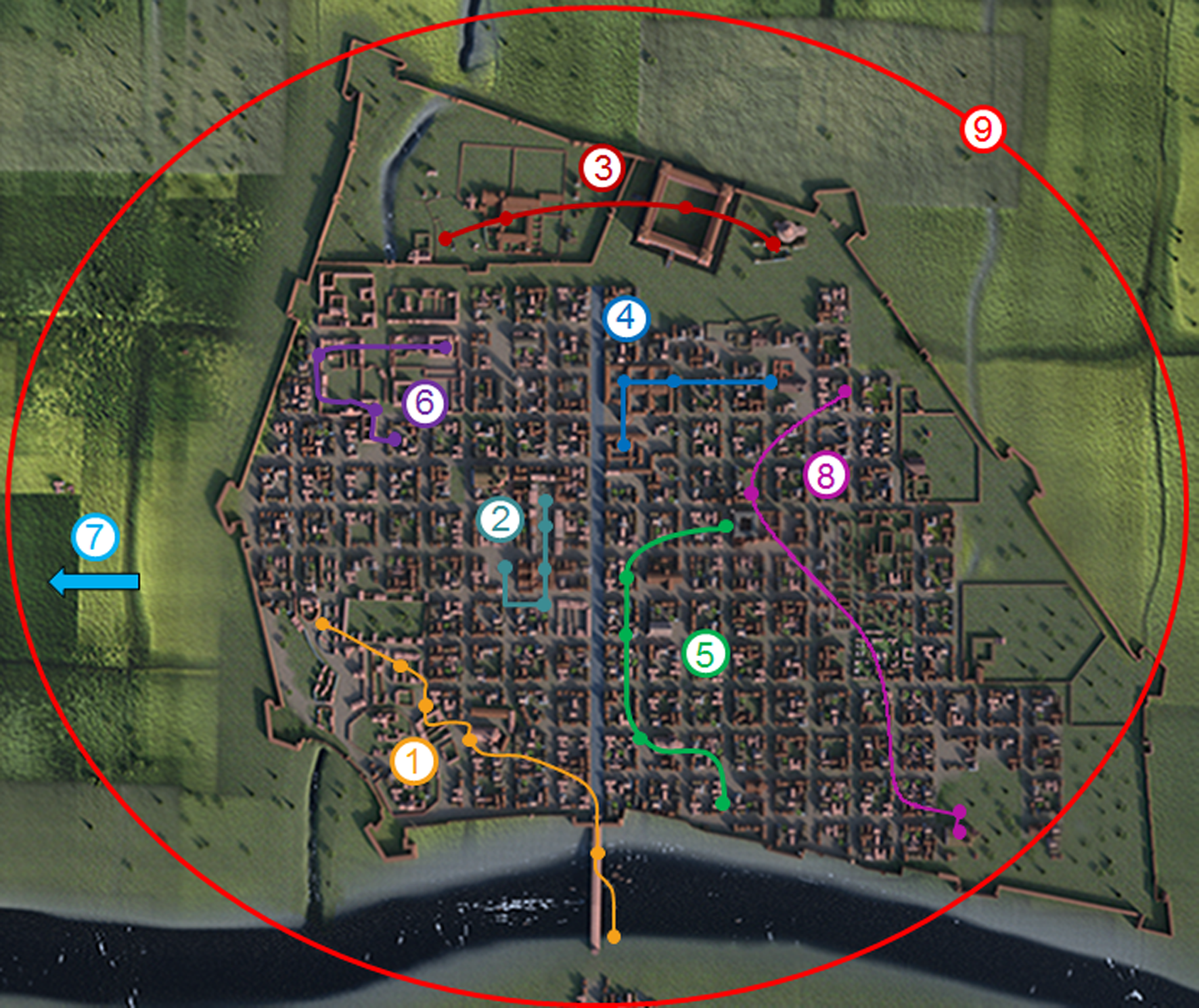 Welcome to the Computer Vision and Multimedia Lab website.
Welcome to the Computer Vision and Multimedia Lab website.
GET IN TOUCH
Virtual reconstruction of Pavia in the 16th century / Ricostruzione virtuale di Pavia nel XVI secolo
3D models and videos made by the students of the Computer Vision course (academic year 2015/2016 and 2016/2017 for 3D models and following academic years for videos) of the Master's degree in Computer Engineering of the University of Pavia, with Prof. Virginio Cantoni as supervisor and Dr. Piercarlo Dondi as co-supervisor; parallel implementation on CINECA parallel calculation architecture and on a virtual machine of the University of Pavia Information System Area by Luigi Santangelo; coordination by Alessandra Setti (Computer Vision & Multimedia Lab - CVML)
The projects of the course (the 3D models) are described in the book (in Italian and English)
"Ricostruzione virtuale di Pavia nel XVI secolo / Virtual reconstruction of Pavia in the 16th century"
edited by Virginio Cantoni, Mauro Mosconi and Alessandra Setti (Pavia University Press 2018 - ISBN:978-88-6952-085-3).
Along with about fifty detailed 3D models of the main buildings (civilian and religious), a whole host of characters milling through the city's streets have been created, and a 'platform' can support very promising innovative multimedia applications to promote the history of Pavia and its richness. Link to the catalogue page and the video of presentation of the book.
Please see also the article:
Virginio Cantoni, Piercarlo Dondi, Luca Lombardi, Alessandra Setti (2019). Teaching Computer Graphics through a Digital Humanities project, IEEE Computer Graphics and Applications, Volume 39, Issue 2, pp. 89-94, DOI:10.1109/MCG.2019.2895487
The 3D models have been realized for three main goals: (1) creation of a virtual interactive environment of the city of Pavia in the 16th century, to show buildings, churches and monuments with high accuracy; (2) reproduction of different views of the city and production of videos shot with a camera that tour around the city without constraints; (3) development of an app for smartphone and tablet to get the information about the area displayed, with the possibility of comparing in situ the existing buildings with those rebuilt in 3D.
Here are the 3D MODELS.
Urban evolution of the city of Pavia from the 16th to the 17th century - this video shows the change of the city buildings with a virtual path made of 3D models: destruction of part of the Visconteo Castle, building of the Monastery of San Felice, destruction of the medieval walls and later building of the Spanish ones, building of Palazzo Broletto, Collegio Borromeo, Collegio Ghislieri and the complex of the church of Santa Maria di Canepanova (video by Alessio Gullotti, rendering on a virtual machine of the University of Pavia Information System Area by Luigi Santangelo)
 VIDEOS of nine virtual tours of Renaissance Pavia, as shown in the figure, are under development.
VIDEOS of nine virtual tours of Renaissance Pavia, as shown in the figure, are under development.Tour number 9, starting from the viewpoint of the fresco in the church of San Teodoro (Veduta di Pavia del 1522, probably made by Bernardino Lanzani, in the first span of the left aisle of the church) turn around the city, always at the same distance from the Spanish walls.
The other tours, from number 1 to number 7, refers to 3D modelled areas dated 1550, while the tour number 8 (Collegio Borromeo, church of Canepanova and Collegio Ghislieri) is about buildings built later, in the second half of ‘500.
Along with Pavia inside the walls, suburban areas with respective churches have been sketched (such as San Lanfranco, San Salvatore complex, etc.) and some peculiar buildings (for example the Castle of Mirabello).
TOUR NUMBER 9: aerial tour of the city of Pavia in the Renaissance (video and parallel implementation on CINECA parallel calculation architecture by Federico Guerra, Marco Provitina and Luigi Santangelo) - https://youtu.be/pSFlBRgzECw (final version, 01/03/2018) - https://youtu.be/dY7CAlCH1BI (draft, 14/12/2017)
TOUR NUMBER 1: Ponte Vecchio (the old bridge), church of San Teodoro, Via dei Mulini, church of Sant'Agata and church of San Giorgio (video and parallel implementation on CINECA parallel calculation architecture by Federico Guerra, Marco Provitina and Luigi Santangelo) -
https://youtu.be/AsnsukmpC5k (draft, 05/03/2018)
TOUR NUMBER 2: Statue of Regisole, Piazza Piccola (small square), Broletto, Piazza Grande (big square), churches (video by Luca Todaro, rendering on a virtual machine of the University of Pavia Information System Area by Luigi Santangelo) -
https://youtu.be/bUpr40BrQ2Q (18/01/2022)
TOUR NUMBER 3: Citadel, church of San Pietro in Ciel d’Oro, Visconti castle, church of Santa Maria in Pertica (video by Stefano Di Carlo, rendering on a virtual machine of the University of Pavia Information System Area by Luigi Santangelo) -
https://youtu.be/sN_m0gHG--I (final version, 19/01/2021) - https://youtu.be/0u2IzNMwGpM (draft, 28/07/2020)
TOUR NUMBER 4: Church of San Francesco, Hospital San Matteo, University and church of San Martino del Leano
(video by Matteo Goretti, Marco Arazzi and Nicolas Carolo, rendering on a virtual machine of the University of Pavia Information System Area by Luigi Santangelo) -
https://youtu.be/ouDWZ3Q0WOM (12/10/2021)
TOUR NUMBER 5: Church of Santa Maria M.V., San Michele, San Primo, San Tommaso, Torre dal Pizzo in giù (video by Fabio Pezzini, rendering on a virtual machine of the University of Pavia Information System Area by Luigi Santangelo) -
https://youtu.be/V1QhrcpKpAs (04/12/2020)
TOUR NUMBER 8: Collegio Ghislieri, church of Canepanova, San Giovanni in Borgo, Collegio Borromeo
(video by Alessio Gullotti, rendering on a virtual machine of the University of Pavia Information System Area by Luigi Santangelo) -
https://youtu.be/EC-OZi1o-iI (17/05/2021)